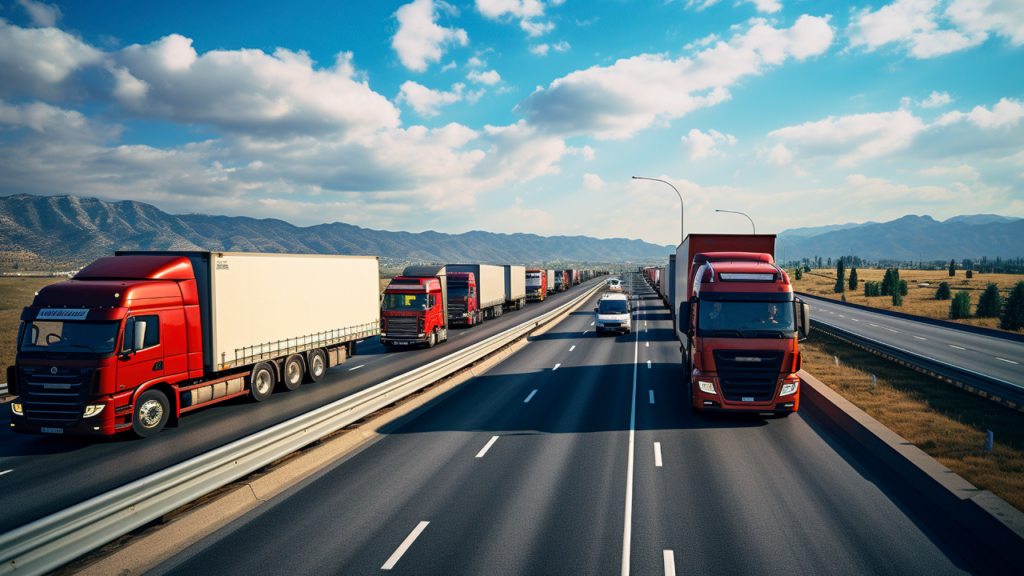Land transport services form the foundation of modern logistics and commuting systems, enabling the efficient movement of goods and people across cities and regions. From freight trucks to passenger buses, this mode of transportation is essential for economic growth, societal connectivity, and sustainable mobility. Its adaptability and affordability have made it a preferred choice for businesses and individuals alike.
Types of Land Transport Services
Freight Transport
Freight transport encompasses the movement of goods via trucks, vans, and rail. Businesses heavily rely on this sector to deliver raw materials to factories and distribute finished products to markets. These services often include long-haul trucking, regional delivery, and cross-border transportation.
Passenger Transport
Passenger transport includes buses, taxis, ride-sharing services, and commuter trains. These services offer affordable and reliable travel options for individuals, especially in urban areas. Public transit systems, in particular, help reduce traffic congestion and environmental impact.
Specialized Transport Services
Specialized land transport addresses unique requirements like perishable goods, oversized cargo, or hazardous materials. Vehicles equipped with temperature control or advanced safety mechanisms cater to these specialized needs, ensuring compliance with regulations and customer satisfaction.
Key Benefits of Land Transport Services
Affordability
One of the most significant advantages of land transport is its cost-effectiveness. For short to medium distances, it is often cheaper than air or sea transport. Businesses benefit from lower logistics costs, while consumers enjoy affordable travel options.
Flexibility
Land transport services are highly adaptable. They can accommodate varying shipment sizes, routes, and schedules, making them suitable for urgent deliveries and last-minute changes.
Accessibility
With extensive road networks, land transport reaches areas that other modes cannot, such as remote villages and small towns. This accessibility is crucial for connecting rural areas to urban hubs.
Speed for Short Distances
For regional deliveries, land transport is faster than sea transport and often less complex than air transport. It is ideal for ensuring timely delivery of goods over short distances.

The Role of Technology in Land Transport
Real-Time Tracking
GPS technology has revolutionized land transport by enabling real-time tracking of vehicles and shipments. Customers can monitor their deliveries, while companies can optimize routes to reduce delays.
Route Optimization
Artificial intelligence (AI) and machine learning are increasingly used for route optimization. These technologies analyze traffic patterns, weather conditions, and delivery schedules to ensure maximum efficiency.
Autonomous Vehicles
Self-driving trucks and buses are gradually making their way into the industry, promising to reduce human error, improve safety, and lower operational costs.
Digital Booking Systems
Online platforms allow users to book, track, and manage land transport services seamlessly. These systems provide convenience and transparency, enhancing the user experience.
Challenges in Land Transport Services
Traffic Congestion
Traffic congestion remains a significant challenge in urban areas. Delays caused by heavy traffic increase fuel consumption and operational costs, affecting both businesses and commuters.
Environmental Concerns
Land transport is a major contributor to greenhouse gas emissions. Diesel-powered trucks and buses significantly impact air quality and global warming, necessitating the shift to cleaner energy solutions.
Infrastructure Issues
Poor road conditions, inadequate transport networks, and insufficient maintenance can hinder the efficiency of land transport. Investments in infrastructure are essential to address these issues.
Regulatory Compliance
Transport providers must navigate a complex web of regulations, including safety standards, environmental laws, and cross-border documentation. Adhering to these rules can be time-consuming and costly.
Land Transport in Logistics
Supply Chain Integration
Land transport plays a critical role in supply chains by connecting production facilities, warehouses, and retail outlets. Its reliability ensures smooth operations and timely deliveries.
Last-Mile Delivery
Last-mile delivery is the final step in the logistics chain, where goods are delivered directly to the customer. Land transport is indispensable for this stage, particularly in urban and suburban areas.
Multi-Modal Transport
Land transport often works in conjunction with air, sea, and rail transport to create efficient multi-modal systems. Trucks and vans handle the first and last legs of the journey, ensuring comprehensive coverage.
Land Transport for Public Use
Urban Mobility
Buses, trams, and commuter trains form the backbone of urban mobility. These services provide affordable and eco-friendly travel options, reducing reliance on private vehicles.
Rural Connectivity
In rural areas, land transport bridges the gap between isolated communities and urban centers. It facilitates access to essential services, education, and markets.
Ride-Sharing Services
Ride-sharing platforms like Uber and Lyft have transformed passenger transport by offering convenience, affordability, and flexibility. They complement traditional taxi services and public transit.
Sustainability in Land Transport
Electric Vehicles
The adoption of electric and hybrid vehicles is a significant step towards reducing emissions. Governments and companies are investing in charging infrastructure and incentivizing electric transport.
Eco-Friendly Practices
From using biofuels to implementing energy-efficient logistics systems, the industry is embracing greener practices. These efforts aim to minimize the environmental impact of land transport.
Reduced Congestion Strategies
Initiatives like carpooling, dedicated freight lanes, and improved public transit are helping to address congestion while promoting sustainable mobility.
Future Trends in Land Transport
Smart Transport Systems
Smart cities are integrating advanced technologies to create intelligent transport systems. Features like real-time traffic monitoring, automated toll collection, and connected vehicles are becoming standard.
Autonomous Fleets
Driverless vehicles are set to revolutionize land transport by increasing efficiency, safety, and cost savings. Pilot programs for autonomous trucks and buses are already underway.
Enhanced Customer Experience
As competition grows, transport providers are focusing on delivering superior customer experiences. This includes faster delivery times, transparent pricing, and seamless digital interfaces.
Blockchain in Logistics
Blockchain technology is enhancing transparency and security in logistics. It enables accurate tracking of shipments, reduces fraud, and streamlines documentation processes.
Selecting the Right Land Transport Service
Consider Your Needs
Identify the type of transport service that aligns with your requirements, whether it’s freight, passenger, or specialized transport.
Evaluate Costs
Compare pricing structures to find the best value for money without compromising quality.
Check Reliability
Look for providers with a proven track record of timely deliveries and excellent customer service.
Ensure Technological Integration
Choose services that leverage technology for tracking, route optimization, and digital management.
Conclusion
Land transport services are indispensable for connecting people, businesses, and communities. Their adaptability, cost-effectiveness, and technological advancements make them an integral part of modern logistics and mobility.
As the industry evolves to meet environmental and technological challenges, land transport will continue to play a pivotal role in creating a connected and sustainable future.
